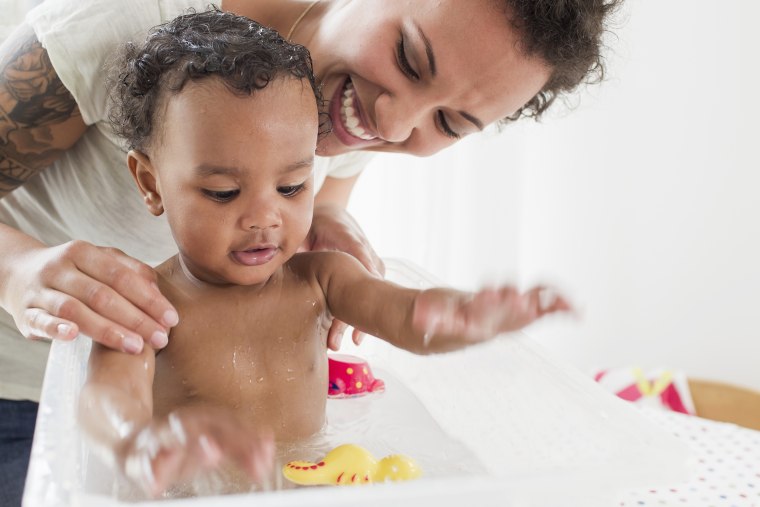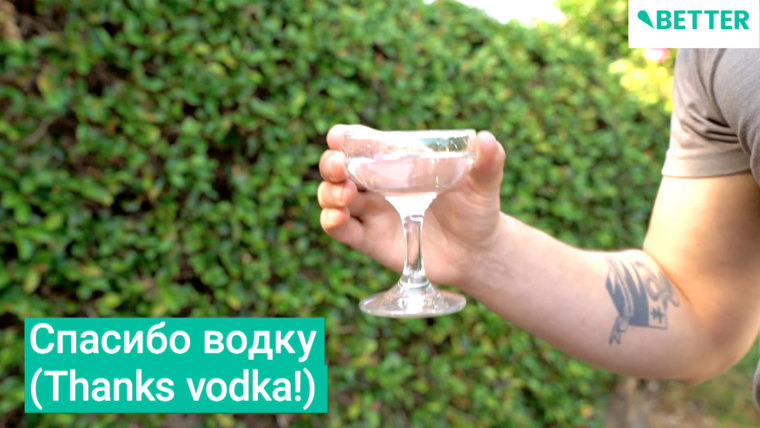How To Clean And Sanitize Baby Toys
How and when to clean everything in your baby's nursery
A new study found that common baby items are dirtier than a pet's water bowl. Here's how to keep the biggest offenders clean.

Infants and toddlers, so wonderful and adorable, are alas, total magnets for germs. They touch everything. They put their hands in their mouths (and other things) and then they touch everything again. Of course they can't yet master good hand hygiene on their own, so parents and caretakers are always on high alert, constantly cleaning up, wiping down and doing whatever else they can to minimize their babies' chances of encountering infectious bacteria.
But when you're juggling children and other family and likely work — it's really challenging to manage your baby's hygiene along with virtually everything they come into contact with. There's only so much you can do; and that's okay, because kids are going to be exposed to germs no matter how pristine your household.
Germ exposure will happen anyway, but we can take precautions to minimize
"We're not raising our children in bubbles," says Dr. Shari Platt, chief of pediatric emergency medicine at New York-Presbyterian/Weill Cornell Medical Center tells NBC News Better. "A child will be exposed to bacteria when they're in the outside world (and I'm a strong believer of getting your child outdoors and to experience other children). If they have healthy immune systems they should be able to fight average exposure."
Still, Dr. Platt emphasizes, it's important to keep everything as clean as you can to minimize unnecessary exposure to bacteria, which could prompt infection (though Platt says it's almost impossible to determine when infections are the direct result of contact with everyday germs).
Here's a list of the items you should be focusing on along with expert tips on how and when to clean them.
Bath toys and rubber toys
A new study by InsuranceQuotes.com tested (using gram and stain culture swab tests) common baby items (a bath toy, a teething toy, a stroller handle and a public diaper changing station) to learn what tended to be the germiest. Bath toys blew everything else out of the water, containing over 4.3 million colony-forming units (CFU) per square inch.
Bath toys blew everything else out of the water, containing over 4.3 million colony-forming units (CFU) per square inch.
"Germs likely aren't top of mind at bath time, for example, but bath toys are 10 times dirtier than a pet's water bowl and contain the highest rate of gram-negative rods which are extremely harmful to humans," says Mel Kasulis, project manager for insuranceQuotes.com "Bath toys contain 86 percent gram-negative bacteria and 14 percent gram-positive."
"At the end of each bath time, we recommend soaking all your child's bath toys in a tub of warm water and mild liquid dish soap for several minutes, then rinse well with cool water," says Debra Johnson, Merry Maids home cleaning expert. "Once dry, store them in a basket or storage bin outside of the bathroom."
Teething toys
"Since these are constantly in your baby's mouth, we like to take an extra step when cleaning these," says Johnson. "First, soak in a bowl of hot water and mild liquid dish detergent for a few minutes. Then, in another tub or bowl, mix together distilled white vinegar and warm water and soak the teething toys for 15 minutes before rinsing clean with cool water."
Sippy cups
Also in and out of our kids' mouths all day, sippy cups should be cleaned with care.
"Place spout and valve in a container or bowl full of baking soda, leave overnight," says Johnson. "In the morning, soak all pieces in equal parts distilled white vinegar and water for up to 12 hours. Use a bottle brush to scrub the cup/top and rinse to make sure you got it all."
Wooden toys
Johnson's underscored pro-tip for wooden toys: Do not soak or submerge them in water. Wood is porous and that water absorption can potentially harvest mold.
Do not soak or submerge [wood toys] in water. Wood is porous and that water absorption can potentially harvest mold.
Here's what Johnson suggests:
"Prepare a solution of 50 percent white vinegar and 50 percent water in a spray bottle. Spray blocks with the solution. Wipe blocks with a dry microfiber cloth. If a spray bottle is not available, mix vinegar and water in a bowl. Then immerse a microfiber cloth in the vinegar/water solution, wring out the microfiber cloth, and wipe the wooden blocks."
Plush toys
"You should clean stuffed animals and more plush toys weekly or when it is visibly dirty or stained," says Johnson. "It's also smart to wash these when the baby has been sick to stop the spread of germs. We recommend placing stuffed animals in a pillowcase should parts come off during wash, and wash in the washing machine according to instructions on the tag. If there are none, it's standard to wash in hot water and tumble dry on low."
We apologize, this video has expired.

Mattress and Bedding
"Bedding should be cleaned every week, or more often should the need arise (overflow of diaper if your little sneaks into bed)," says Johnson. "First, vacuum both sides of the mattress and underneath it to scoop up any loose debris. If the baby's mattress is waterproof, just wipe down with a baby wipe. If it isn't waterproof, mix ¼ cup hydrogen peroxide, ¾ cup water, and ½ tsp. dish soap. Dip a microfiber cloth into the solution and wipe down the mattress. Wash all sheets and blankets."
You should also take precautions to guard against allergens in the bedding.
"Just as in any room of the house, the number of allergens that can build up in your child's bedroom are tremendous, however they can be managed," says Richard Ciresi, franchise owner of Aire Serv, a Neighborly Company. "In order to protect the place where they rest their heads every night, encase their pillows and mattress in a sealed tight dust-mite-proof cover. This will prevent build up. Make sure to wash their sheets at least once a week."
Stroller handles
InsuranceQuote's study found that the average stroller handles contain 1,418,818 CFU, ranking them third germiest of the four objects tested.
"Typically, stroller handles are made of foam, which makes cleaning them easy," says Leanne Stapf, VP of operations at The Cleaning Authority. "Lather up a dish rag with warm soapy water and wipe down the handle. You will need to do this frequently, as strollers can be subject to a lot of outside germs. If you want to eliminate this step, many manufactures now offer washable grip covers."
On the go? Johnson suggests baby wipes for a quick scrub down.
Surprisingly, public diaper changing stations were the least germy of the four objects tested.
Diaper changing area
Surprisingly, public diaper changing stations were the least germy of the four objects tested in the study (maybe because we're already vigilantly wiping them down). Keep up the habit, and clean these with antibacterial wipes per Dr. Platt's recommendation, before and after use.
Diaper bins
You'll also want to keep those diaper bins in tiptop hygienic condition.
"Diapers are a breeding ground for bacteria and when the diaper bins start looking like Mount Everest, it's time for a deep clean to keep the germs at bay," says Stapf. "Take your diaper bin outside and spray it down with a hose. Scrub the pail with warm soapy water or use water and a half cup of Borax."
To help eliminate any lingering odors, Johnson recommends the following: "Mix together a DIY solution of two cups water to 40 drops lavender essential oil for antibacterial properties — and to mask the odor of those yucky diapers. Each time a new bag is placed in the bin, sprinkle baking soda in the bag. If you have an extra stinky diaper, sprinkle a tad more baking soda after dropping it in the bin."
Always be prepped with wipes and ban the 'five-second rule'
Dr. Platt strongly recommends keeping antibacterial wipes on you at all times, adding that you should use these to wipe down any area your child may come into contact with while traveling. For convertible car seats, Johnson suggests baby wipes or a spray bottle filled with a combination of water and distilled white vinegar. Keep this and a microfiber cloth to wipe in the car and you're good to go.
Another quick tip from Dr. Platt: "The five-second rule does not apply to children. If they drop something on the floor, wash it immediately. I'd also like to dispel the myth that our spit cleans anything. Loving and nurturing as a parent's mouth may be, it is, like all mouths, filled with bacteria."
MORE SPRING CLEANING TIPS
- How often you should clean your home, according to science
- The best spring cleaning products, according to the pros
- Why the 20/10 method can change the way you clean
- How often to replace everything in your bathroom, bedroom and kitchen
Want more tips like these? NBC News BETTER is obsessed with finding easier, healthier and smarter ways to live. Sign up for our newsletter and follow us on Facebook, Twitter and Instagram.
How To Clean And Sanitize Baby Toys
Source: https://www.nbcnews.com/better/health/how-when-clean-everything-your-baby-s-nursery-ncna896596
Posted by: bessettemorce1984.blogspot.com

0 Response to "How To Clean And Sanitize Baby Toys"
Post a Comment